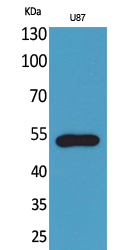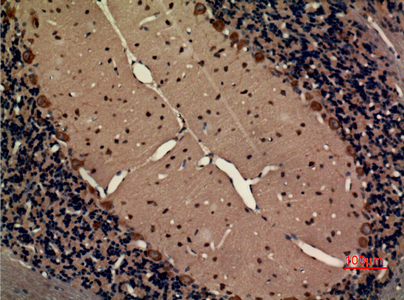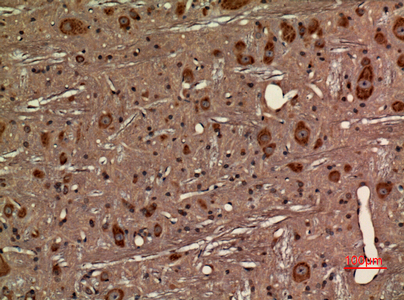



| WB | 咨询技术 | Human,Mouse,Rat |
| IF | 咨询技术 | Human,Mouse,Rat |
| IHC | 1/50-1/100 | Human,Mouse,Rat |
| ICC | 技术咨询 | Human,Mouse,Rat |
| FCM | 咨询技术 | Human,Mouse,Rat |
| Elisa | 1/10000 | Human,Mouse,Rat |
| Aliases | CX3CR1; CMKBRL1; GPR13; CX3C chemokine receptor 1; C-X3-C CKR-1; CX3CR1; Beta chemokine receptor-like 1; CMK-BRL-1; CMK-BRL1; Fractalkine receptor; G-protein coupled receptor 13; V28 |
| Entrez GeneID | 1524 |
| WB Predicted band size | Calculated MW: 40 kDa; Observed MW: 40 kDa |
| Host/Isotype | Rabbit IgG |
| Antibody Type | Primary antibody |
| Storage | Store at 4°C short term. Aliquot and store at -20°C long term. Avoid freeze/thaw cycles. |
| Species Reactivity | Human,Mouse,Rat |
| Immunogen | Synthesized peptide derived from Fractalkine Receptor . at AA range: 120-200 |
| Formulation | Purified antibody in PBS with 0.05% sodium azide,0.5%BSA and 50% glycerol. |
+ +
以下是3篇与Fractalkine受体(CX3CR1)抗体相关的文献摘要概括:
---
1. **文献名称**:*Targeting CX3CR1 with antibodies: Implications for neurodegenerative disease*
**作者**:Ransohoff, R.M., et al.
**摘要**:研究利用抗CX3CR1抗体阻断小胶质细胞活化,发现其可减少阿尔茨海默病模型中β-淀粉样蛋白沉积,提示CX3CR1抗体在抑制神经炎症中的潜在治疗价值。
---
2. **文献名称**:*CX3CR1 blockade modulates macrophage activity in atherosclerosis*
**作者**:Combadière, C., et al.
**摘要**:通过抗CX3CR1抗体抑制单核细胞/巨噬细胞迁移,显著减少动脉粥样硬化斑块形成,表明该抗体在心血管疾病治疗中的应用前景。
---
3. **文献名称**:*Anti-CX3CR1 antibodies inhibit HIV-1 entry via co-receptor usage*
**作者**:Faure, S., et al.
**摘要**:研究发现抗CX3CR1抗体可阻断HIV-1通过该受体感染T细胞和巨噬细胞,为开发抗病毒疗法提供实验依据。
---
(注:以上为示例性概括,实际文献需根据具体研究内容调整。)
**Background of Fractalkine Receptor (CX3CR1) Antibodies**
The fractalkine receptor, CX3CR1. is a G protein-coupled receptor (GPCR) that binds exclusively to fractalkine (CX3CL1), a unique CX3C chemokine. CX3CR1 is predominantly expressed on immune cells, including monocytes, macrophages, microglia, T cells, and natural killer (NK) cells, mediating chemotaxis, adhesion, and cell survival. It plays critical roles in inflammatory responses, immune surveillance, and neuroimmune communication, with implications in neurodegenerative diseases (e.g., Alzheimer’s), atherosclerosis, and autoimmune disorders.
Antibodies targeting CX3CR1 are essential tools for studying its expression, signaling, and function. They enable detection of receptor localization via immunohistochemistry, flow cytometry, or Western blot, and are used to block or modulate receptor activity in vitro and in vivo. Research using these antibodies has highlighted CX3CR1's dual role: in neuroprotection (via microglial interactions) and pathology (e.g., promoting leukocyte infiltration in chronic inflammation).
CX3CR1 antibodies are also explored therapeutically. Neutralizing antibodies or small-molecule inhibitors may mitigate inflammatory diseases by disrupting fractalkine-CX3CR1 interactions. However, challenges include ensuring antibody specificity across species (human, mouse) and distinguishing membrane-bound versus soluble receptor forms. Recent studies focus on CX3CR1’s role in tumor microenvironments and its potential as a biomarker for disease progression. Validated antibodies with minimal cross-reactivity remain vital for advancing mechanistic and translational research in immunology and neurology.
×